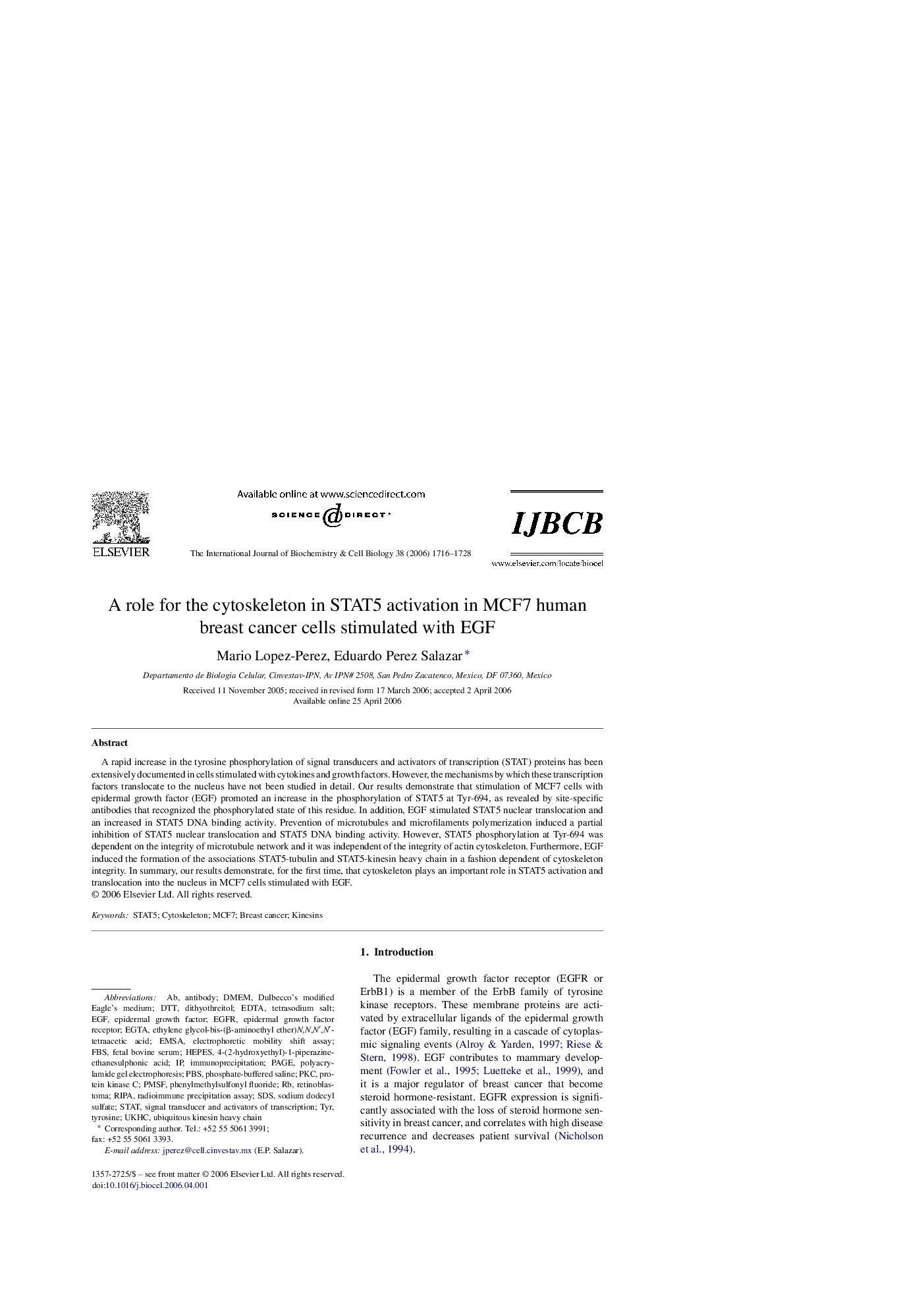| Article ID | Journal | Published Year | Pages | File Type |
|---|---|---|---|---|
| 1985063 | The International Journal of Biochemistry & Cell Biology | 2006 | 13 Pages |
A rapid increase in the tyrosine phosphorylation of signal transducers and activators of transcription (STAT) proteins has been extensively documented in cells stimulated with cytokines and growth factors. However, the mechanisms by which these transcription factors translocate to the nucleus have not been studied in detail. Our results demonstrate that stimulation of MCF7 cells with epidermal growth factor (EGF) promoted an increase in the phosphorylation of STAT5 at Tyr-694, as revealed by site-specific antibodies that recognized the phosphorylated state of this residue. In addition, EGF stimulated STAT5 nuclear translocation and an increased in STAT5 DNA binding activity. Prevention of microtubules and microfilaments polymerization induced a partial inhibition of STAT5 nuclear translocation and STAT5 DNA binding activity. However, STAT5 phosphorylation at Tyr-694 was dependent on the integrity of microtubule network and it was independent of the integrity of actin cytoskeleton. Furthermore, EGF induced the formation of the associations STAT5-tubulin and STAT5-kinesin heavy chain in a fashion dependent of cytoskeleton integrity. In summary, our results demonstrate, for the first time, that cytoskeleton plays an important role in STAT5 activation and translocation into the nucleus in MCF7 cells stimulated with EGF.
